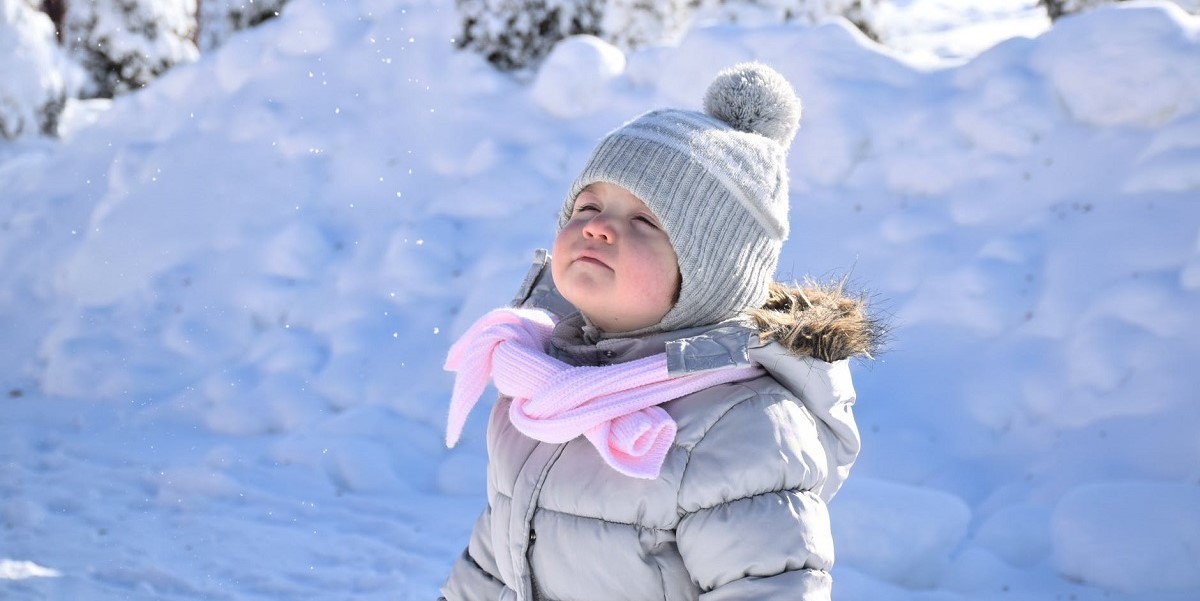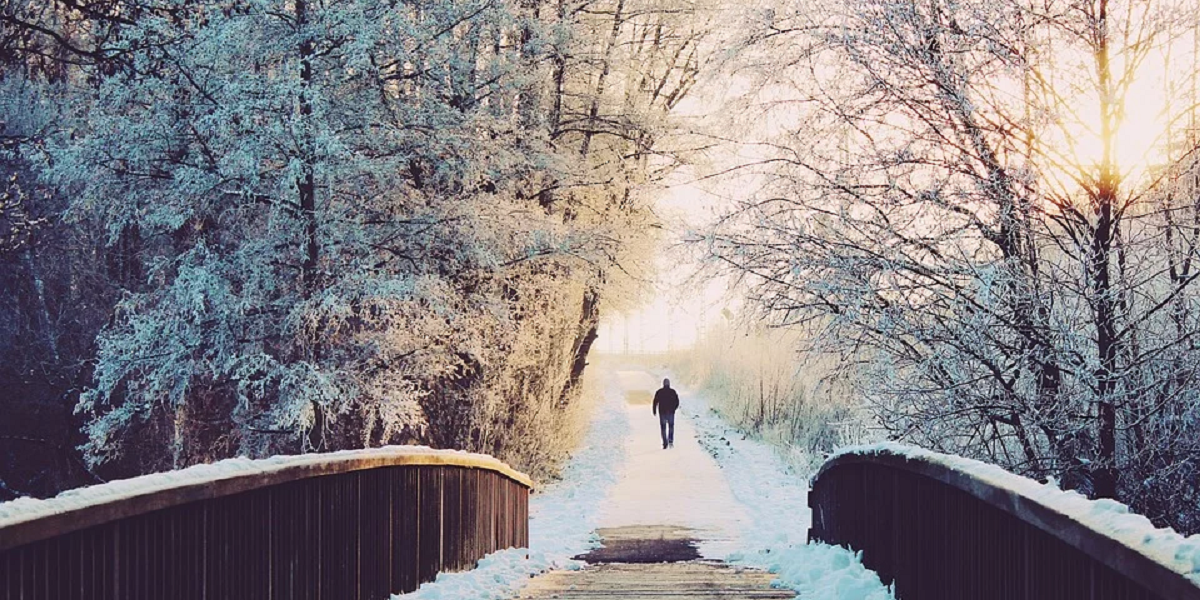7 Tips for Walking to School in the Winter
Snow, rain and dark mornings can put families off walking to school in the winter, but these factors really shouldn’t be an excuse. Winter walking can actually be pretty fun as long as you plan ahead, dress appropriately and stay motivated.

Have fun and be safe while walking to school in the winter.
It’s natural, however, to lack enthusiasm and be concerned about slipping on the ice, getting damp and staying safe in the dark. That’s why we’ve come up with seven great tips to make your winter walk to school as safe and enjoyable as possible.
1 | Layer Up
Wearing a thick coat over your normal outfit can often leave you feeling sweaty, heavy and tired by the time you get to school. The answer is to layer up!

Always dress appropriately for the weather on your walk to school.
Start with a fairly thin material that soaks up moisture, like a sports top. Then add a warm layer, such as a fleece, and finally put on a layer for wind and rain protection, such as a waterproof jacket. Wearing three layers enables you to remove clothing if you get too hot or if you decide to pop into a shop or café on your way to school.

Layer up during winter months.
2 | Prevent Frostbite
Frostbite begins with frostnip, whereby our extremities (nose, fingers, ears, toes etc.) turn red and start to tingle. If you experience this, try to cover exposed areas immediately and go inside as soon as possible.
Prevent frostnip by investing in a good pair of gloves to protect your fingers and a hat to prevent the loss of body heat through your head. If you suffer from asthma, it’s also a good idea to cover your nose and mouth to avoid breathing in too much cold and damp air.

Wrap up to avoid frostbite and frostnip.
3 | Choose the Right Footwear
While trainers might be comfortable, they’re also designed to let the air in, so won’t keep you very warm. Smart shoes, meanwhile, tend to have poor grip and might get dirty from salt on the roads and pavements.
Ankle-high and water-resistant footwear will protect your feet from the snow and rain. These also have good grip, so you’re less likely to fall over. You should, however, still take the usual measures to avoid slipping, such as keeping your hands out of pockets and standing up straight to ensure good balance.

Get a good pair of boots before heading out in the winter.
Remember to wear thick socks under your winter footwear. Not only will these keep your feet nice and toasty, but they’re also more likely to protect against blisters; however, it’s a good idea to carry plasters until you’ve worn your new shoes in completely!

Thick socks will protect your feet from frostbite and blisters.
4 | Be Seen
It might be dark on your journey to or from school, so it’s important to be bright and be seen. If you’re walking near a road, be sure to wear a high-vis jacket or vest or attach reflective straps to your bags and clothes.
Make your walk as safe as possible by sticking to well-lit areas, which are popular among other commuters. Street lights will also help you to see what’s coming and ensure you can see any ice or puddles.

Stick to areas with street lights when it’s dark outside.
5 | Summer Rules Still Apply
Winter days aren’t all doom and gloom; there’s still plenty of sunshine around, so don’t forget sunglasses and, in some areas, sun cream too. It’s also important to carry water, as hydration is just as important in the winter. You could also carry a flask with a hot drink to keep you cosy on your walk.

Carry hot and cold drinks on your winter walk.
6 | Be Prepared
A bit of wind, rain and snow never hurt anyone, but extreme weather conditions pose a serious risk. Check the forecast before heading out and avoid walking in heavy snow, rain or fog. If the weather’s not on your side, you could always opt for indoor exercise activities, such as dance, ice skating or swimming.

Don’t be tempted to walk to school in extreme weather conditions.
Whether you’re walking, scooting or cycling to school, it’s always important to plan your journey and let someone else know your route. You might feel paranoid but walking in the dark can pose risks and it’s always better to be safe than sorry. Don’t forget to pick up your phone before leaving and ensure it’s charged so you can contact someone in the case of an emergency.

Carry a phone on your walk in case of an emergency.
7 | Motivate
Your child might claim they’re too tired to walk to school, but maybe they just need a little motivation! Make the walk fun by talking about your child’s favourite topics or things you’ve done as a family, such as a film you’ve watched, book you’ve read or trip you’ve taken.

Don’t be put off by a bad mood; find a way to encourage your children to get active!
Why not invite others on the walk? Travelling with friends encourages children to socialise and helps adults to meet parents and carers. And don’t forget furry friends too! Taking your dog might encourage your child to get out and about. You could also volunteer to walk a neighbour’s pup if they need to get to work or don’t feel like going out in the cold.

Bring a furry friend to make the walk to school more enjoyable.

